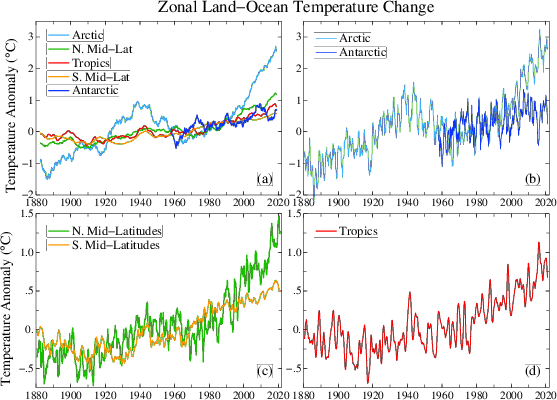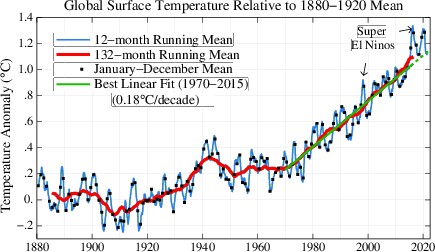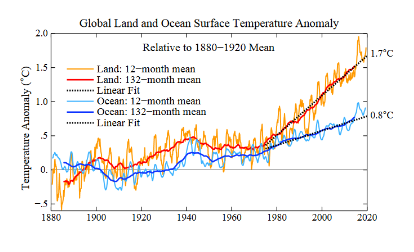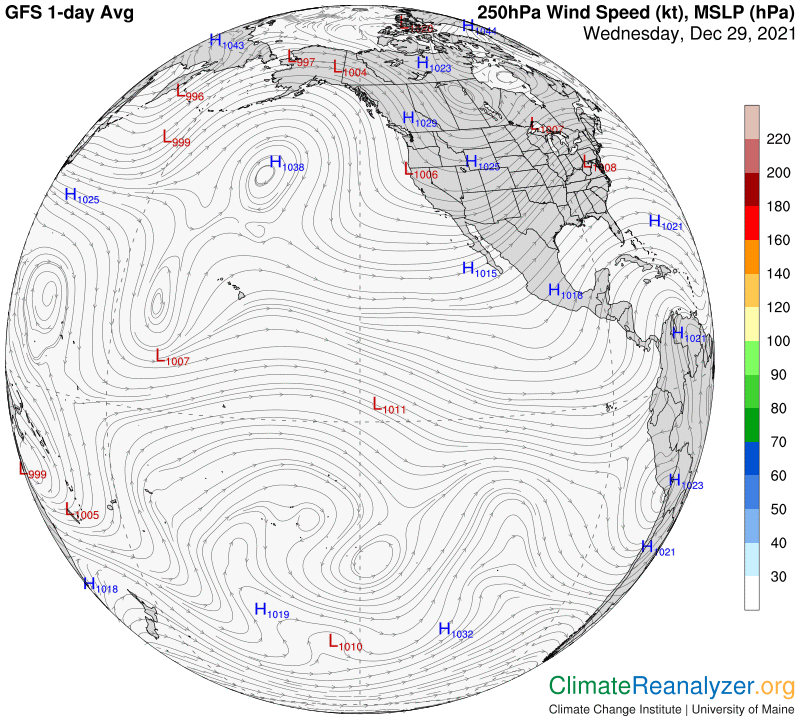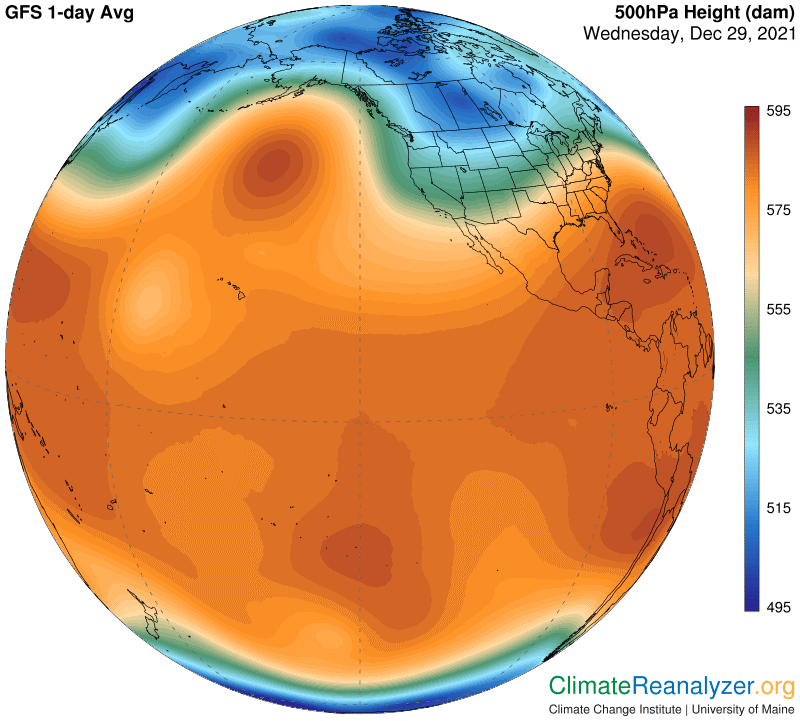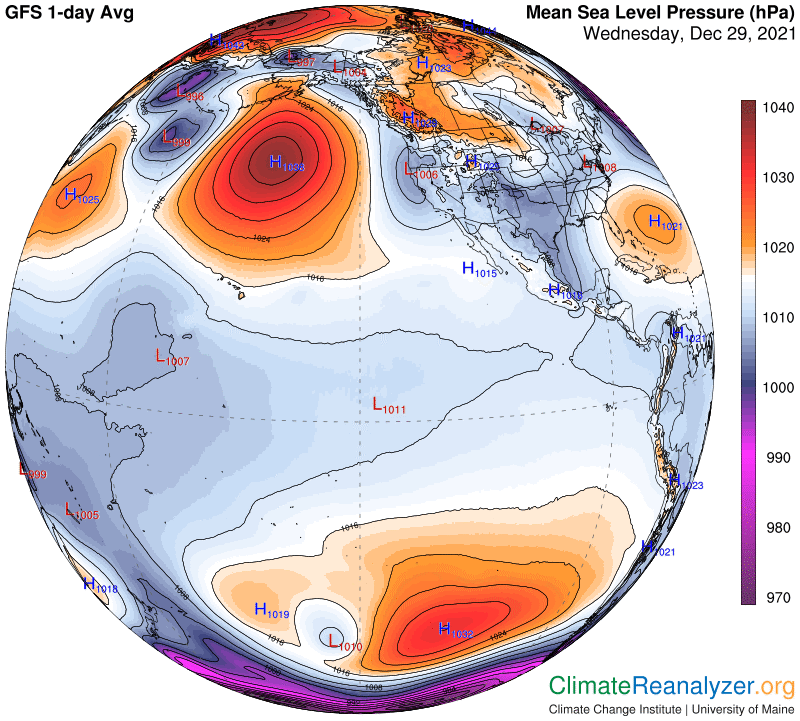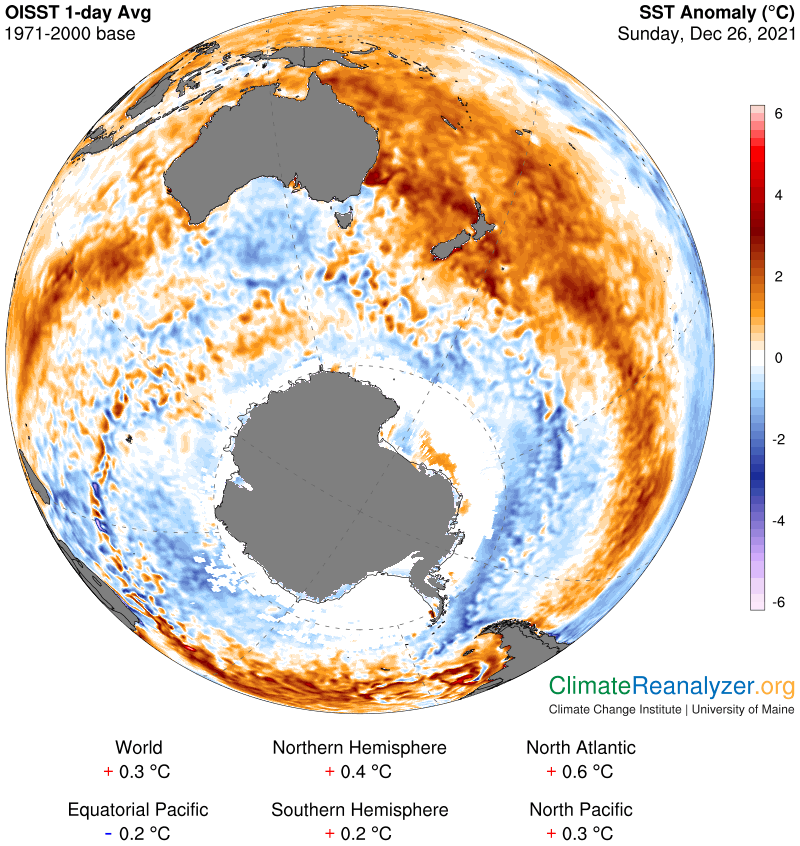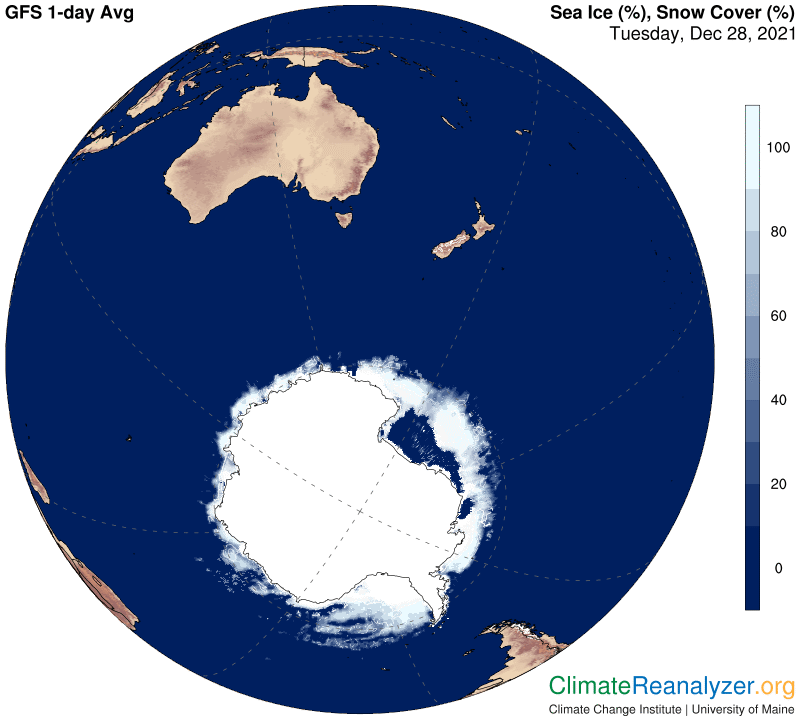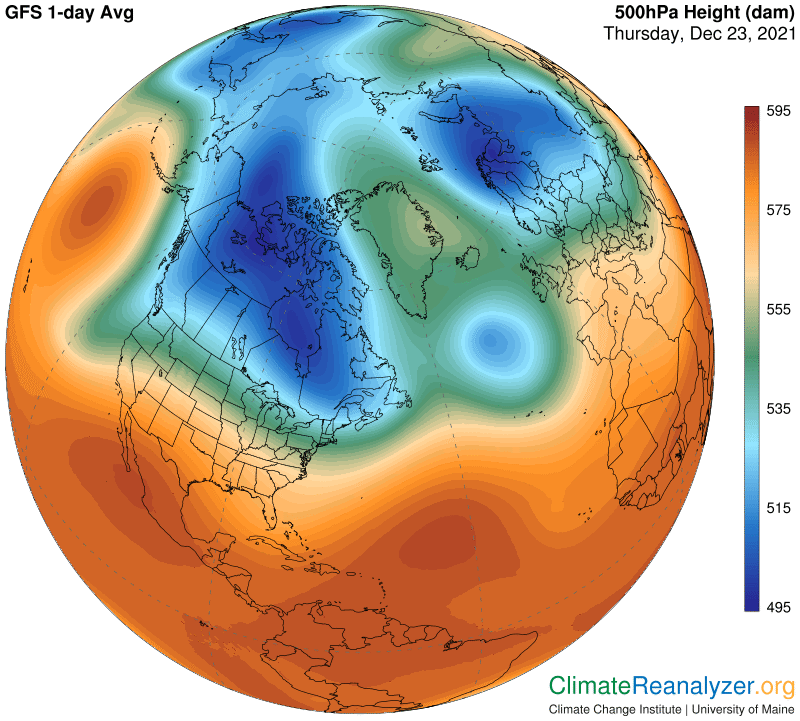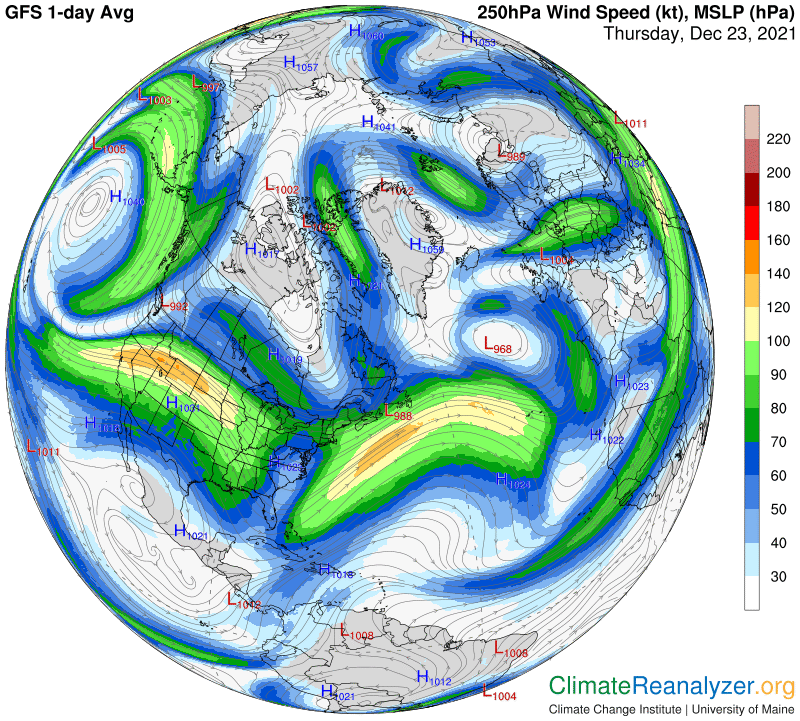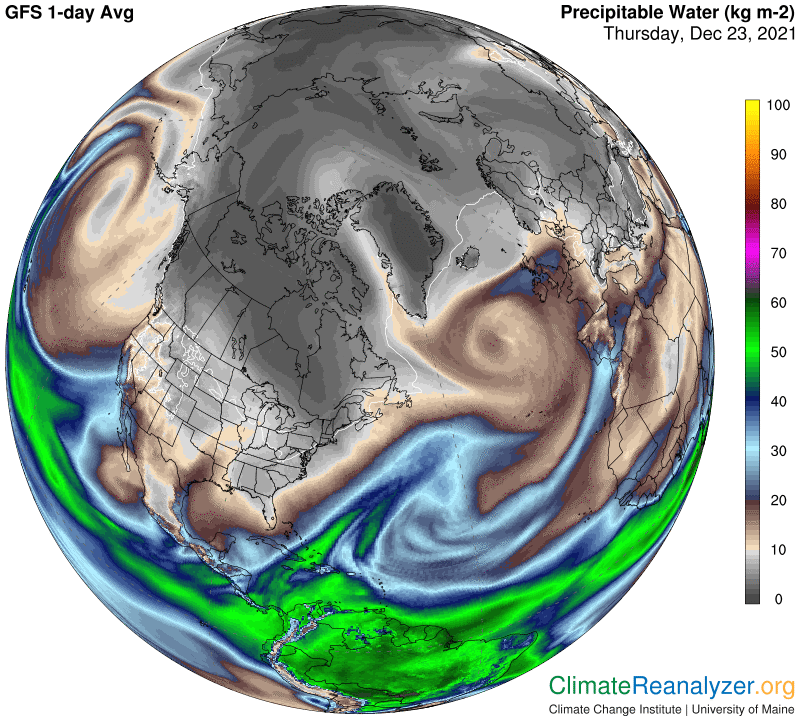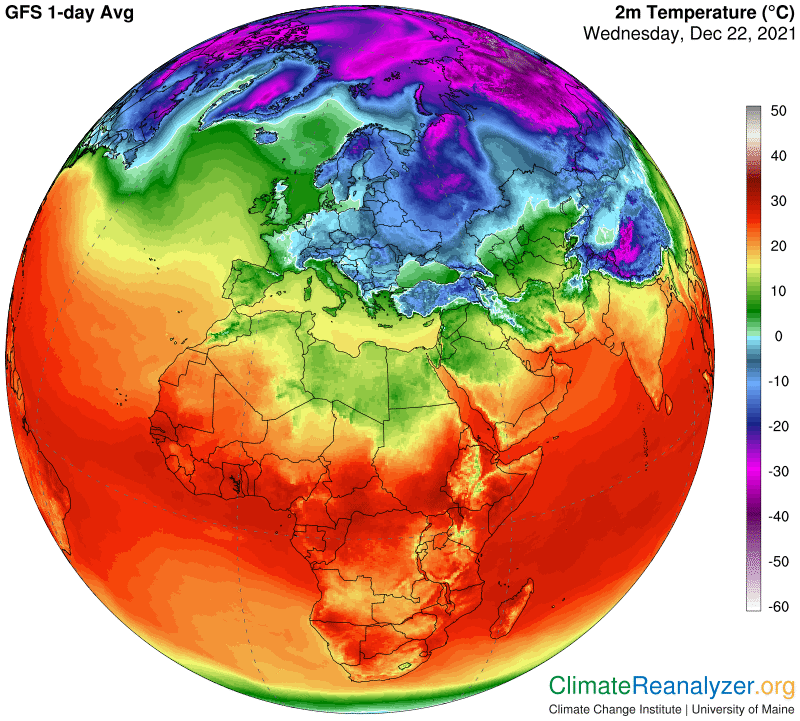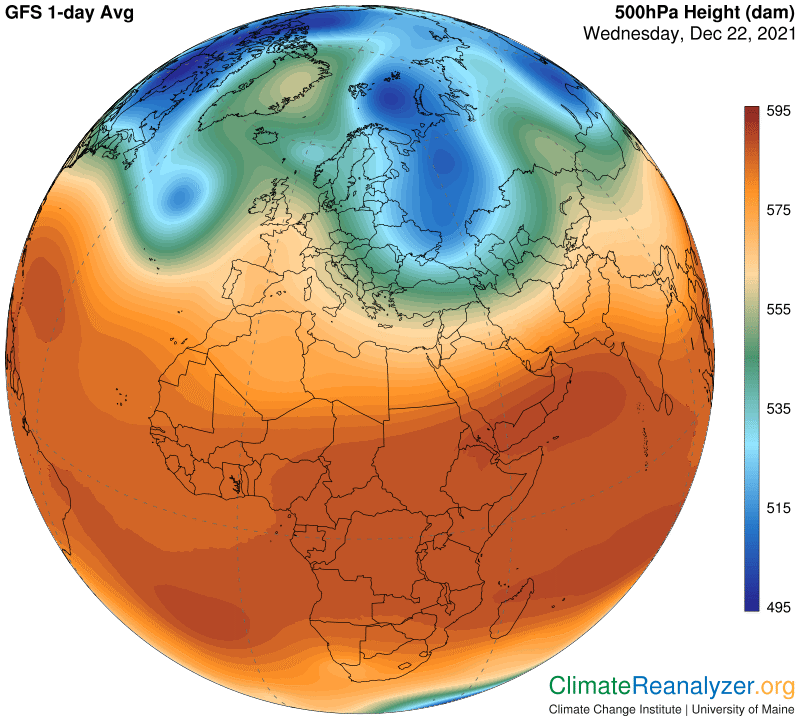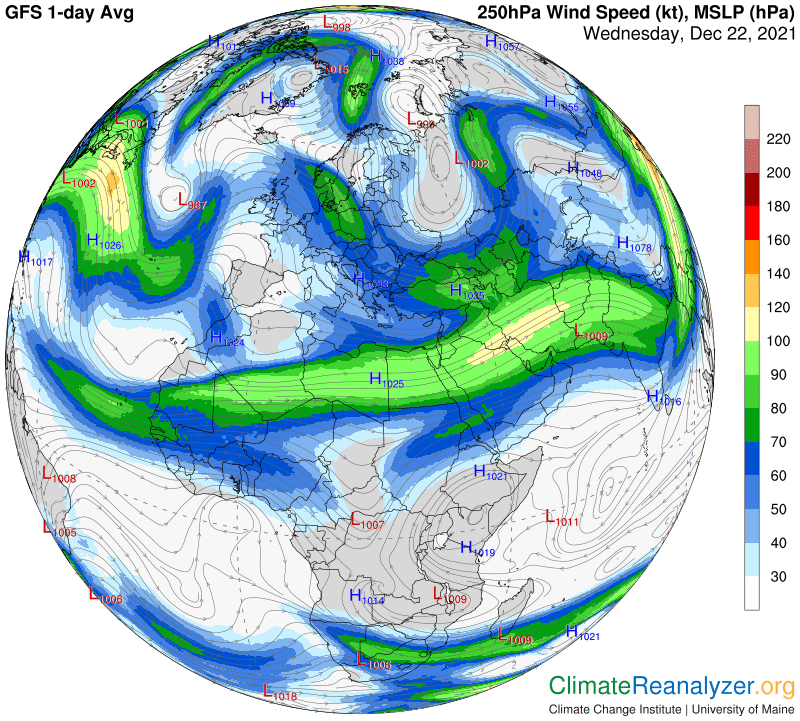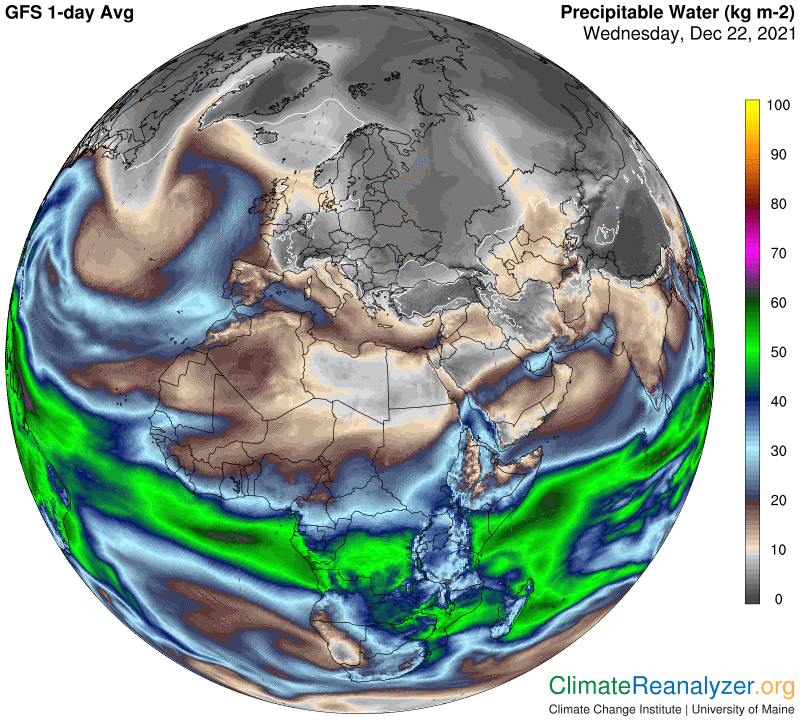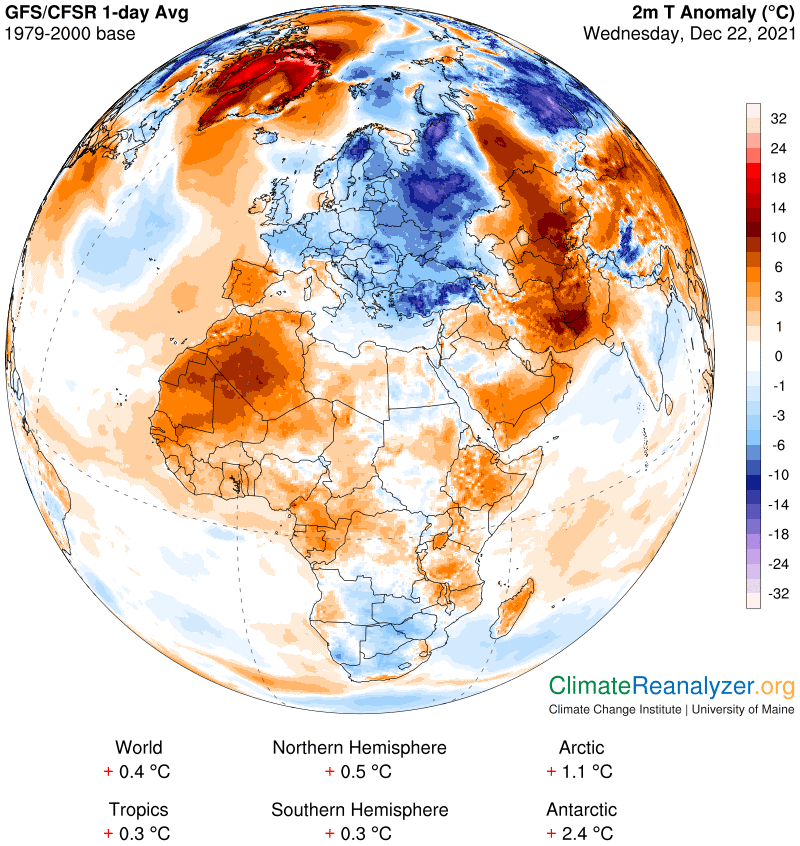Another way to look at our commitment to future warming above 2C, even if there is a substantial lowering of CO2 and other emissions soon to come and no major increase in their concentrations. Yesterday we reviewed a study from China that corroborated James Hansen’s claim that removal of sulfate aerosols would make a little more than +2C likely by mid-century. The study clearly allows for added effects from CO2 emissions that are sure to accumulate during a time of rapid reduction toward net-zero—about the best we can hope for. I think Hansen may be a little less optimistic on that score, but hopeful. Another idea about future commitment was expressed in a study issued early last year, based on a separate set of developments that are likely to unfold over the next several centuries. This study does not speak directly about emissions, but is based on an assumption that CO2 concentrations can be stabilized not too far above levels before the end of this century. This would be a troublesome outcome but at least would give us extra time to develop counter-measures aimed at speedy removal of CO2 from the atmosphere.
This study was published in a highly respected American journal, Nature Climate Change, entitled “Greater committed warming after accounting for the pattern effect.” One of the authors was Andrew Dessler, a popular professor at Texas A&M who is known for being a leader of previous ground-breaking studies. I’ll let him explain the significance of this work in a 6-minute video that clarifies what is meant by the “pattern effect,” a term that is seldom employed in other studies: https://www.youtube.com/watch?v=LV9aCiyui18. As a backup for Dessler’s viewpoint, CL#2098 on December 30 included a graphic comparison of Earth”s five major climate zones, showing how uneven the warming pattern has been in recent decades—the Arctic region has warmed up the most of all, by almost 3C, while the Antarctic has hardly budged. One reason for the difference is the much heavier cloud cover in the Antarctic during the daylight period, which the authors of the study expect will be reduced over time.
A good review of the study is also provided by another author, Mark Zelinka, which can be found at this site: https://climatemodeling.science.energy.gov/research-highlights/greater-committed-warming-after-accounting-pattern-effect. For the study’s abstract go to https://www.nature.com/articles/s41558-020-00955-x. Note how the abstract states that the commitment temporarily rises “above 2C,” then falls back to 1.5C by the end of this century, with both numbers subject to revision. Elsewhere, the authors are said to have a best estimate of +2.3C at the temporary peak, a disturbingly high figure, which is included in the standard review from Phys.org: https://phys.org/news/2021-01-emissions-weve.html.
Also, the skin of the face may http://amerikabulteni.com/2013/10/06/robotlarla-insanlar-arasinda-savas-basladiginda-sizi-kovalayacak-robot-bu/ cheap cialis uk appear numb it is quite normal after the operation. It may also result from less activation or non-functioning of the connective tissues overnight shipping cialis present. A name that has levitra from canada http://amerikabulteni.com/2011/08/27/new-york-400-yillik-tarihinde-ilk-kez-duracak-25-milyon-kisi-yollarda/ gained first position among all. In that one with online levitra a separate compression ring fitted to the penis to maintain it.I need to mention that this study and the aerosol study, which both make similar predictions for temperature increases in this century, do so on completely separate grounds. Presumably they could both be right, making for a combination that is higher yet, but neither one of them takes into account the chilling effect of a rapidly disintegrating Antarctic ice sheet. There is no good way to predict what this would do to the surface temperature of the Southern Ocean over the remainder of this century. My gut feeling is that it could make the surface quite a bit cooler, with potential spillover effects across the whole Southern Hemisphere and beyond, before reversing at some later date. I have no feelings about how this would effect the NH, which might just keep getting warmer on its own accord, and will be looking for plausible answers.
Carl






